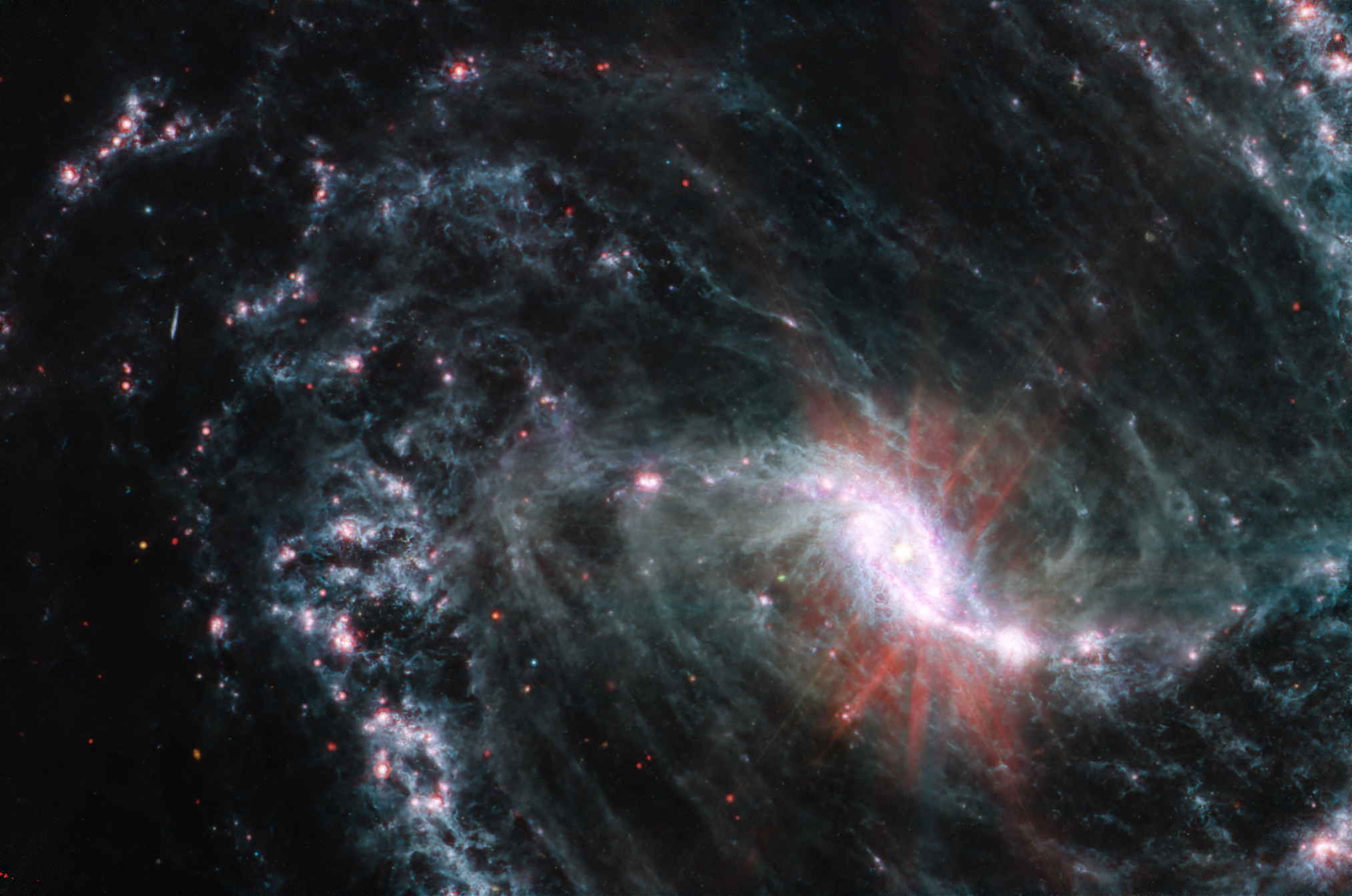1 min read
NGC 7496 (MIRI Image)
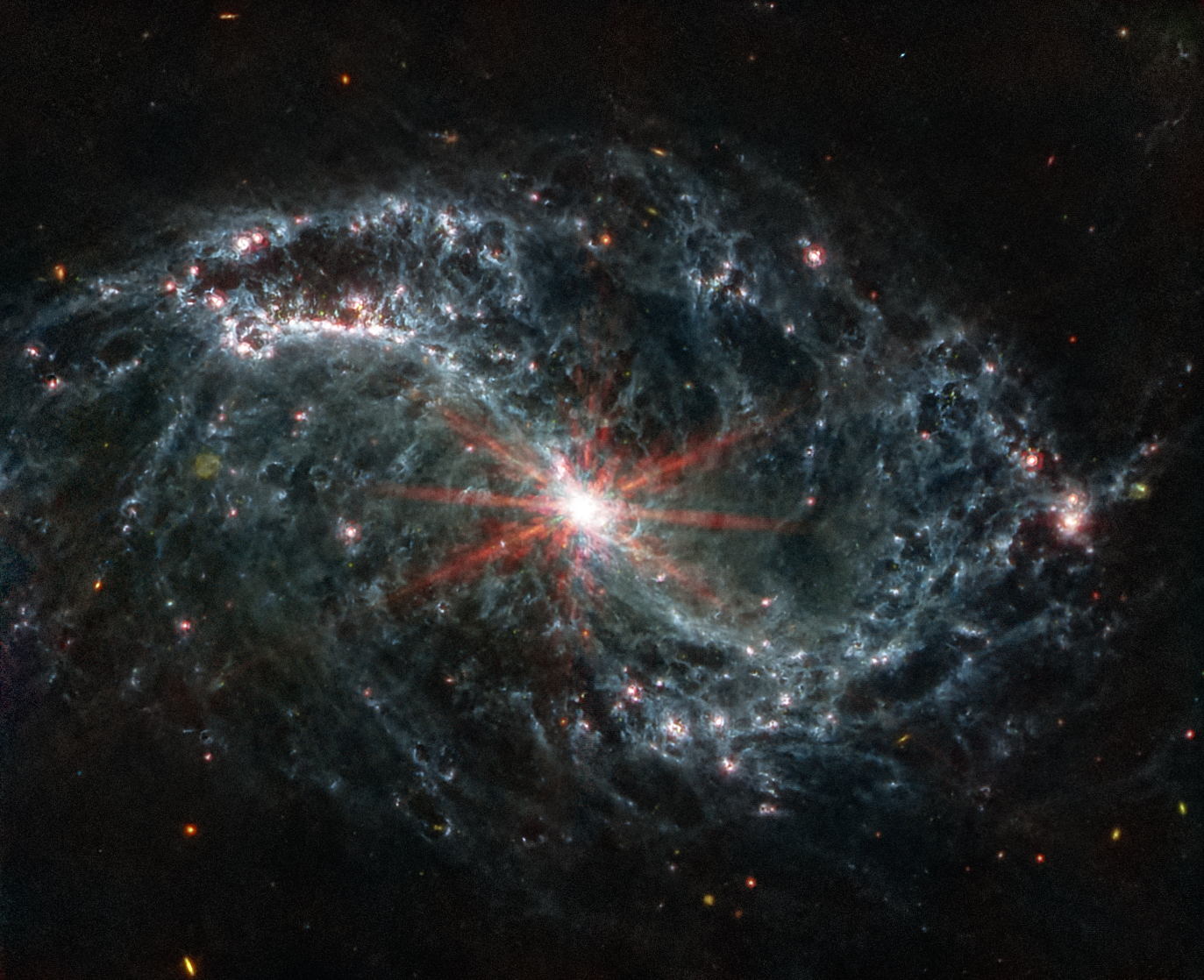
Scientists are getting their first look with NASA’s James Webb Space Telescope’s powerful resolution at how the formation of young stars influences the evolution of nearby galaxies. The spiral arms of NGC 7496, one of a total of 19 galaxies targeted for study by the Physics at High Angular resolution in Nearby Galaxies (PHANGS) collaboration, are filled with cavernous bubbles and shells overlapping one another in this image from Webb’s Mid-Infrared Instrument (MIRI). These filaments and hollow cavities are evidence of young stars releasing energy and, in some cases, blowing out the gas and dust of the interstellar medium surrounding them.
Until Webb’s high resolution at infrared wavelengths came along, stars at the earliest point of the lifecycle in nearby galaxies like NGC 7496 remained obscured by gas and dust. Webb’s specific wavelength coverage allows for the detection of complex organic molecules called polycyclic aromatic hydrocarbons, which play a critical role in the formation of stars and planets. In Webb’s MIRI image, these are mostly found within the main dust lanes in the spiral arms.
In their analysis of the new data from Webb, scientists were able to identify nearly 60 new, embedded cluster candidates in NGC 7496. These newly identified clusters could be among the youngest stars in the entire galaxy.
At the center of NGC 7496, a barred spiral galaxy, is an active galactic nucleus (AGN). AGN is another way to refer to an active supermassive black hole that is emitting jets and winds. This glows quite brightly at the center of the Webb image. Additionally, Webb’s extreme sensitivity also picks up various background galaxies, which appear green or red in some instances.
NGC 7496 lies over 24 million light-years away from Earth in the constellation Grus.
MIRI was contributed by ESA and NASA, with the instrument designed and built by a consortium of nationally funded European Institutes (The MIRI European Consortium) and NASA’s Jet Propulsion Laboratory, in partnership with the University of Arizona.
About the Object
- R.A. PositionR.A. PositionRight ascension – analogous to longitude – is one component of an object's position.23:09:47.29
- Dec. PositionDec. PositionDeclination – analogous to latitude – is one component of an object's position.-43:25:40.58
- ConstellationConstellationOne of 88 recognized regions of the celestial sphere in which the object appears.Grus
- DistanceDistanceThe physical distance from Earth to the astronomical object. Distances within our solar system are usually measured in Astronomical Units (AU). Distances between stars are usually measured in light-years. Interstellar distances can also be measured in parsecs.24 million light-years
About the Data
- Data DescriptionData DescriptionProposal: A description of the observations, their scientific justification, and the links to the data available in the science archive.
Science Team: The astronomers who planned the observations and analyzed the data. "PI" refers to the Principal Investigator.This image was created with Webb data from proposal: 2107 (J. Lee).
- InstrumentInstrumentThe science instrument used to produce the data.MIRI
- Exposure DatesExposure DatesThe date(s) that the telescope made its observations and the total exposure time.6 July 2022
- FiltersFiltersThe camera filters that were used in the science observations.F770W, F1000W, F1130, F2100W
- Object NameObject NameA name or catalog number that astronomers use to identify an astronomical object.NGC 7496
- Object DescriptionObject DescriptionThe type of astronomical object.Spiral galaxy
- Release DateFebruary 16, 2023
- Science ReleaseNASA’s Webb Reveals Intricate Networks of Gas and Dust in Nearby Galaxies
- CreditNASA, ESA, CSA, Janice Lee (NSF's NOIRLab); Image Processing: Joseph DePasquale (STScI)

These images are a composite of separate exposures acquired by the James Webb Space Telescope using the MIRI instrument. Several filters were used to sample wide wavelength ranges. The color results from assigning different hues (colors) to each monochromatic (grayscale) image associated with an individual filter. In this case, the assigned colors are: Blue: F770W, Green: F1000W+F1130W, Red: F2100W

Related Images & Videos
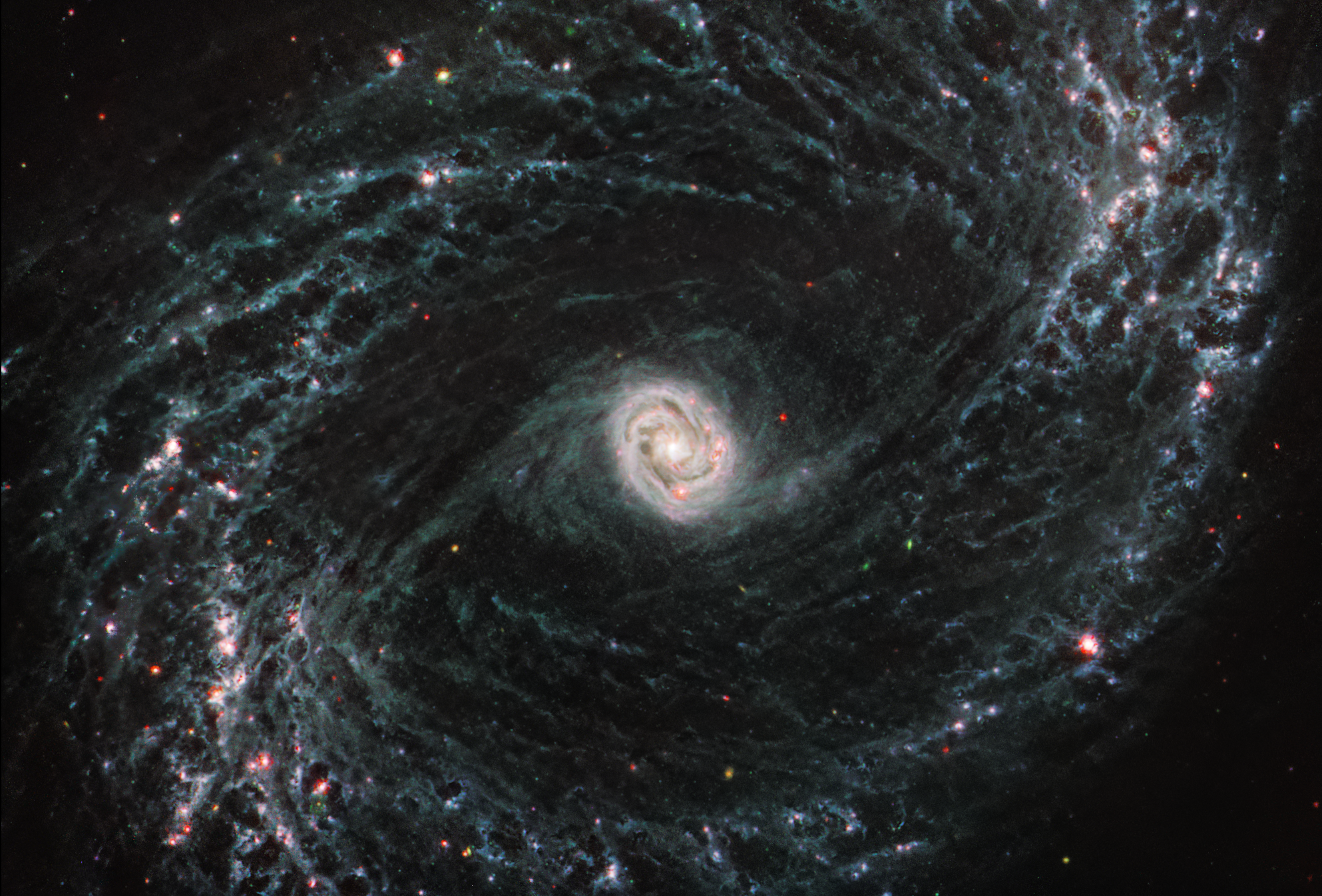
NGC 1433 (MIRI Image)
This image taken by NASA’s James Webb Space Telescope shows one of a total of 19 galaxies targeted for study by the Physics at High Angular resolution in Nearby Galaxies (PHANGS) collaboration. Nearby barred spiral galaxy NGC 1433 takes on a completely new look when observed by...
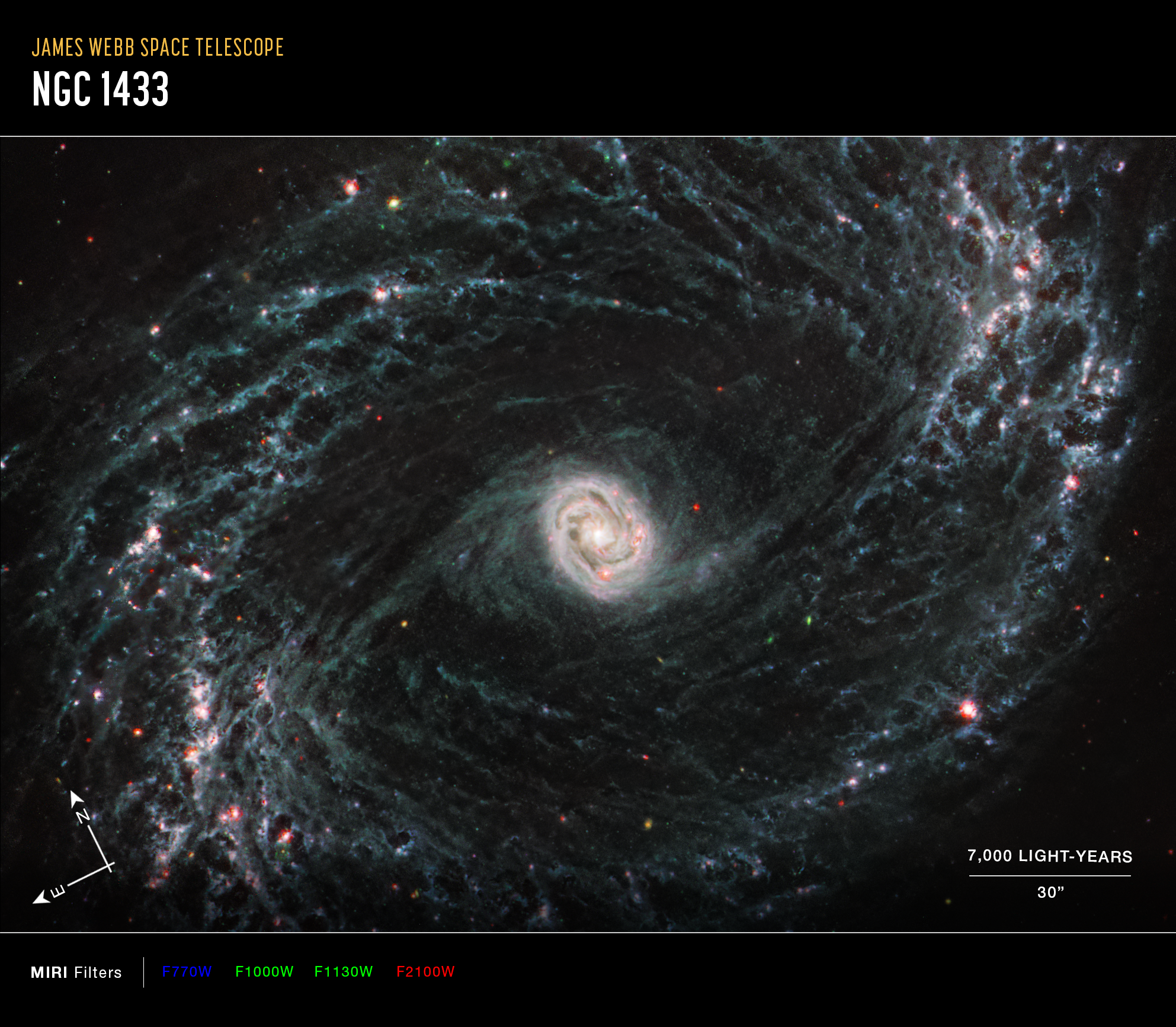
NGC 1433 (MIRI Compass Image)
This image of the nearby galaxy NGC 1433, captured by Webb’s Mid-Infrared Instrument (MIRI) shows compass arrows, scale bar, and color key for reference. The north and east compass arrows show the orientation of the image on the sky. Note that the relationship between north and...
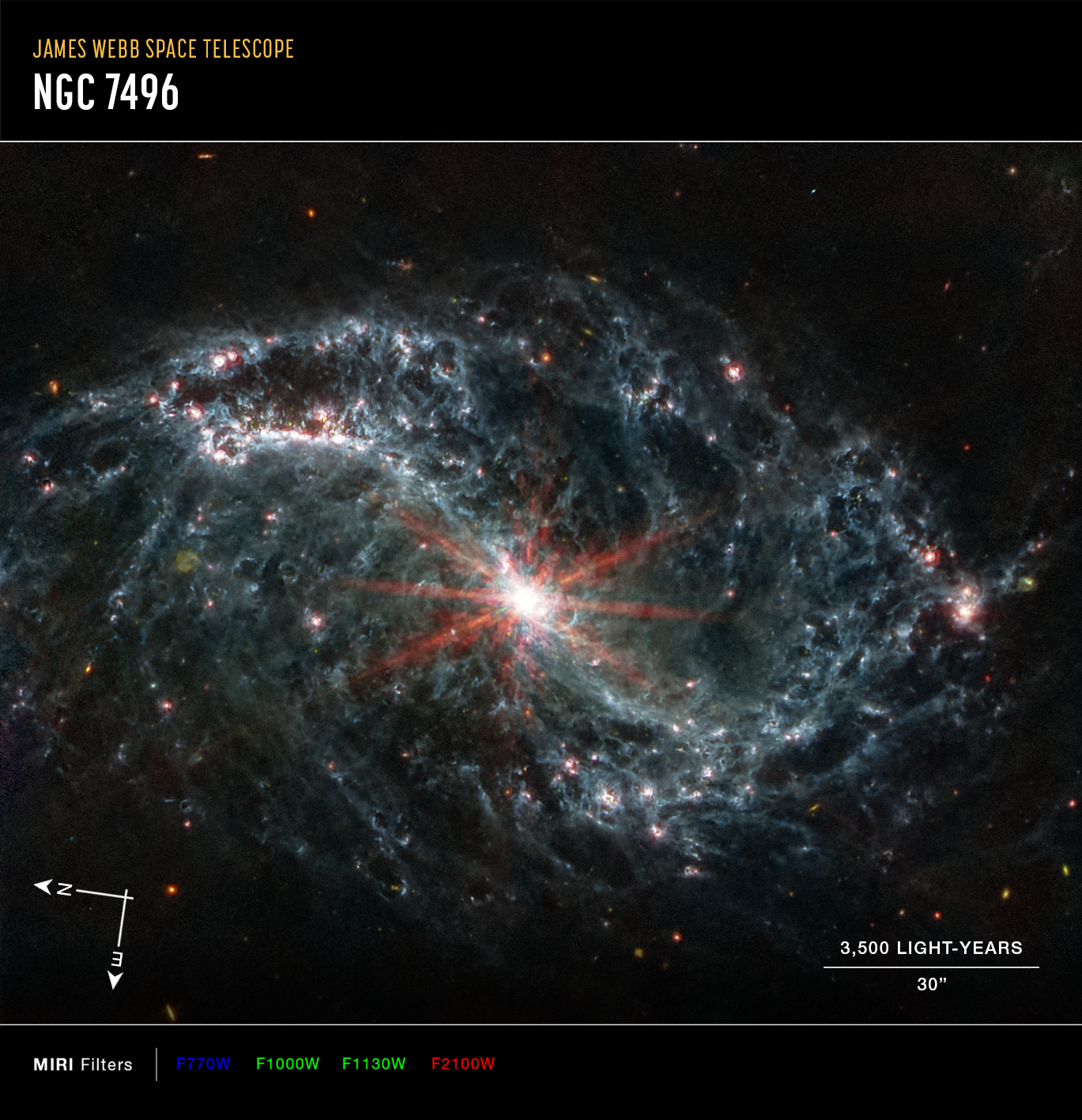
NGC 7496 (MIRI Compass Image)
This image of the nearby galaxy NGC 7496, captured by Webb’s Mid-Infrared Instrument (MIRI) shows compass arrows, scale bar, and color key for reference. The north and east compass arrows show the orientation of the image on the sky. Note that the relationship between north and...
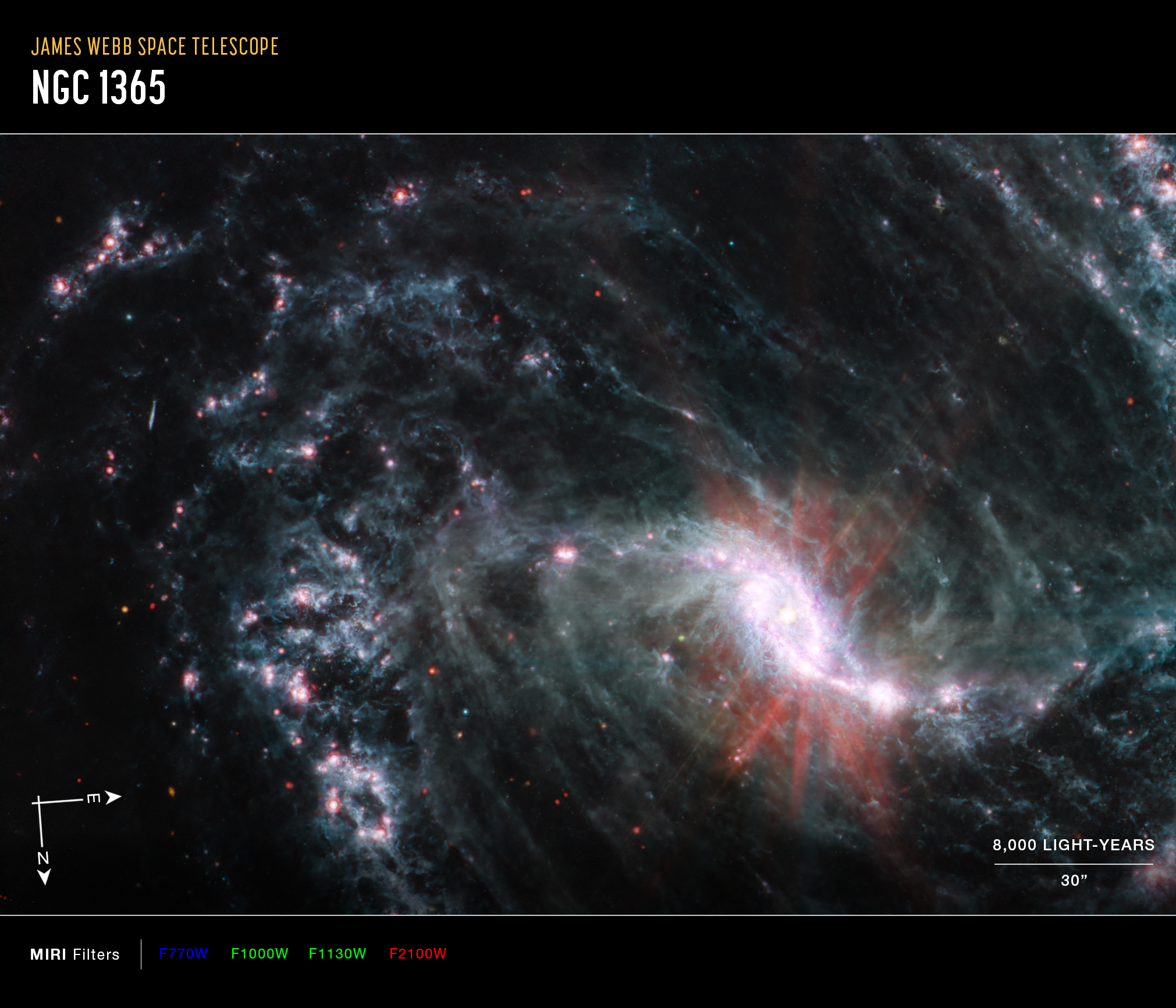
NGC 1365 (MIRI Compass Image)
This image of the nearby galaxy NGC 1365, captured by Webb’s Mid-Infrared Instrument (MIRI) shows compass arrows, scale bar, and color key for reference. The north and east compass arrows show the orientation of the image on the sky. Note that the relationship between north and...
Share
Details
Laura Betz
NASA’s Goddard Space Flight Center
Greenbelt, Maryland
laura.e.betz@nasa.gov
NASA, ESA, CSA, Janice Lee (NSF’s NOIRLab)
Joseph DePasquale (STScI)




























